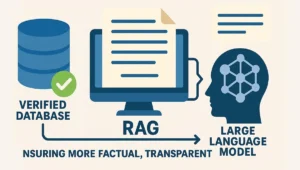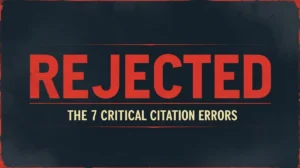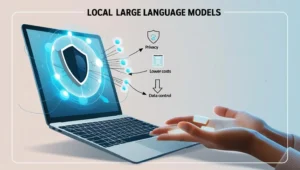Plagiarism is a subject that may seem scary, but understanding it is essential to avoid plagiarism in research when creating various articles. With the internet making it easier to access other people’s ideas, articles, and documents, it’s also easier to plagiarize.
By reading this article uploaded on Researchly, you can learn about the definition, consequences, types of plagiarism in research, and ways to avoid plagiarism.
Table of Contents
Plagiarism
Plagiarism is the act of presenting someone else’s ideas, words, or work as your own without proper attribution. This can include:
- Copying and pasting from sources
- Paraphrasing without giving credit
- Submitting someone else’s work as your own
- Using someone else’s production (a video, a piece of music, a photograph) without citing the source
Plagiarism may be committed intentionally or unintentionally. The latter potentially results from improper academic writing techniques, imprecise notetaking, or incorrect referencing methods. To avoid plagiarism, you can:
- Avoid plagiarism altogether
- Confirm the works’ usage permissions and cite them properly
- Paraphrase with citation
- Only quote directly when you think it is important for your readers to see the original language
What is plagiarism in research paper?
plagiarism means using others’ ideas or work, intentionally or not, without proper credit, including self-plagiarism, which compromises academic integrity.
“Plagiarism is a concept that is widely used in discussions of scientific misconduct., In simple terms, Plagiarism means taking credit for someone else’s work or ideas without giving them proper recognition” (Helgesson & Eriksson, 2015).
This can be intentional or unintentional but is still considered unethical.
How do you plagiarize unintentionally? For example, you read an article and later use ideas from it in your work without realizing it. In this case, an accidental plagiarism happened. Intentional plagiarism is knowingly copying and pasting pieces of text or stealing someone else’s brilliant idea without citing sources.
To understand the reason for avoiding plagiarism, consider its consequences.
Consequences of Plagiarism in research
Plagiarism significantly impacts the peer-review process and the validity of research findings by undermining the credibility and originality of scholarly papers. Plagiarism will have consequences such as academic punishments such as rejection of grades and legal consequences in professional environments (Sayeda, 2024).
Plagiarism not only compromises the quality, credibility, and academic integrity of scholarly publications but also wastes the time and effort of reviewers who are tasked with ensuring the novelty and authenticity of submitted manuscripts. Literature review shows that scientific piracy weakens intellectual capital within educational organizations, diminishing the quality of research outputs and tarnishing the reputation of academic institutions (Abad-García, 2019, Khader, 2023).
For instance, after an allegation of plagiarism in published articles by a leading scientist, his career was significantly affected. It then led to the retraction of several of his published papers. This serves as a reminder that plagiarism can have serious consequences for researchers.
As a researcher, it is important to know about the various types of plagiarism and how to avoid them, which are explained below.
Types of plagiarism in research
We have types of plagiarism in research that are cited from Khaled et al. (2021):
- The pretension of others works as your work,
- Copying others’ work without mentioning the credit or citation,
- Whether a citation was mentioned or not, calming someone’s contribution as your own,
- Refereeing to others’ work as yours by reconstructing their work, and
- Adding a misleading acknowledgment of others as your work.
Also, we have another category of plagiarism cited by Razera (2011, p. 5):
- Complete Plagiarism -complete copy from one or more sources,
- Copy and Paste –use information from digital sources,
- Word Switch –copy a part of the text and make slight changes, and
- Self-plagiarism –reuse your previous work and submit it in a new assignment
As you can see, there are different types of plagiarism in research that you should avoid as a researcher. In the following, we have peppered some guides for that.
How to avoid plagiarism in research?
Avoiding plagiarism in research is the key to originality. We have some tips to help you avoid plagiarism in your research papers:
- Learn about plagiarism: Knowing what it is and its consequences can help you avoid it.
- Proper quoting and summarizing: Give credit to sources by using quotation marks for direct quotes and providing citations.
- Citation styles and guidelines: Citation styles and guidelines: Common citation styles in academic research are APA, MLA, and Chicago. It is important to know the difference between these styles and I recommend referring to the sources for more information.
- Paraphrasing: When you use the content of other research, especially in a literature review, do not use words and sentences from the same text; instead, use other words and sentences. In other words, make sure the original meaning stays intact, try to put the concept in other words, and don’t forget to cite the source. Some AI tools can help you to paraphrase like iThenticate and Plagiarism Checker X.
- Online plagiarism checkers: By using these tools, you can maintain the originality of the writing and prevent plagiarism. Tools like iThenticate, Turnitin Feedback Studio, Grammarly, and Dupli Checker can help you retain originality and improve your writing quality.
Comparison of plagiarism detection tools
When looking for a plagiarism detection tool, assess its accuracy, features, and price. Here is a brief comparison of the tools mentioned above:
- iThenticate: A perfect tool for detecting plagiarism that can analyze texts across various databases and languages. It offers high accuracy and comprehensive database coverage but may be more expensive than the others.
- Turnitin Feedback Studio: A widely used tool in academic institutions with powerful features like plagiarism detection, grading, and peer review. But may have limited language support.
- Grammarly: A well-known tool for improving writing and a user-friendly interface. It also detects non-original text and suggests citations. However, its plagiarism detection capabilities may be less effective compared to the other tools.
- Dupli Checker: A user-friendly plagiarism detection tool that checks content for free and provides a plagiarism report. Also, it is suitable for casual users. However, the accuracy and coverage of databases may be less than the other tools.
Consequently, avoiding plagiarism in research is essential to maintain scientific integrity and credibility. By recognizing the types of plagiarism, employing proper citation and paraphrasing techniques, and using plagiarism detection tools, you can ensure that your work meets the highest ethical standards.
To begin with, you can research more about the search query parameters and increase the efficiency of your search. Practice advanced strategies, tips, and tools to refine and find accurate and relevant data.
Ask for Help: If you’re unsure about something, our FAQ section may have answers to your questions. Of course, we will try to introduce anti-plagiarism tools and techniques in more detail in the future to help researchers.
Remember, honesty is essential in writing. Always give credit where it’s due and keep your work authentic.
References
- Abad-García, M. F. (2019). Plagiarism and predatory journals: A threat to scientific integrity. Anales de Pediatría (English Edition), 90(1), 57-e1. https://doi.org/10.1016/j.anpede.2018.11.006
- Helgesson, G., & Eriksson, S. (2015). Plagiarism in research. Medicine, Health Care and Philosophy, 18, 91-101.
- Khader, A. K. (2023). Source-Based Plagiarism. Indian Scientific Journal Of Research In Engineering And Management, doi: 10.55041/ijsrem17992
- Khaled. F., Sabbih, M., and Al-Tamimi. H (2021). Plagiarism Detection Methods and Tools: An Overview. Iraqi journal of science, 2771-2783. doi: 10.24996/IJS.2021.62.8.30.
- Razera, D. (2011). Awareness, attitude and perception of plagiarism among students and teachers at Stockholm University. Master‘s Thesis, Stockholm University, Stockholm.
- Sayeda, S. K. (2024). Plagiarism in Academic and Professional Settings: Dimensions, Consequences, and Preventive Measure. Bangladesh Journal of Bioethics, 15(1), 22-25.
FAQ
What is plagiarism?
In simple terms, Plagiarism means taking credit for someone else’s work or ideas without giving them proper recognition.
What are some common forms of plagiarism?
Academic plagiarism can be classified from different aspects, which we mentioned here into two classifications:
- The pretension of others works as your work,
- Copying others’ work without mentioning the credit or citation,
- Whether a citation was mentioned or not, calming someone’s contribution as your own,
- Refereeing to others’ work as yours by reconstructing their work, and
- Adding a misleading acknowledgment of others as your work.
Also, we have other categories of plagiarism including complete Plagiarism, copy and Paste, word Switch, and self-plagiarism.
What are the consequences of plagiarism?
Plagiarism not only compromises the quality, credibility, and academic integrity of scholarly publications but also wastes the time and effort of reviewers who are tasked with ensuring the novelty and authenticity of submitted manuscripts.
How to avoid plagiarism in research?
First, raise your knowledge about plagiarism and its types, you can also use methods such as paraphrasing and online plagiarism checkers.







